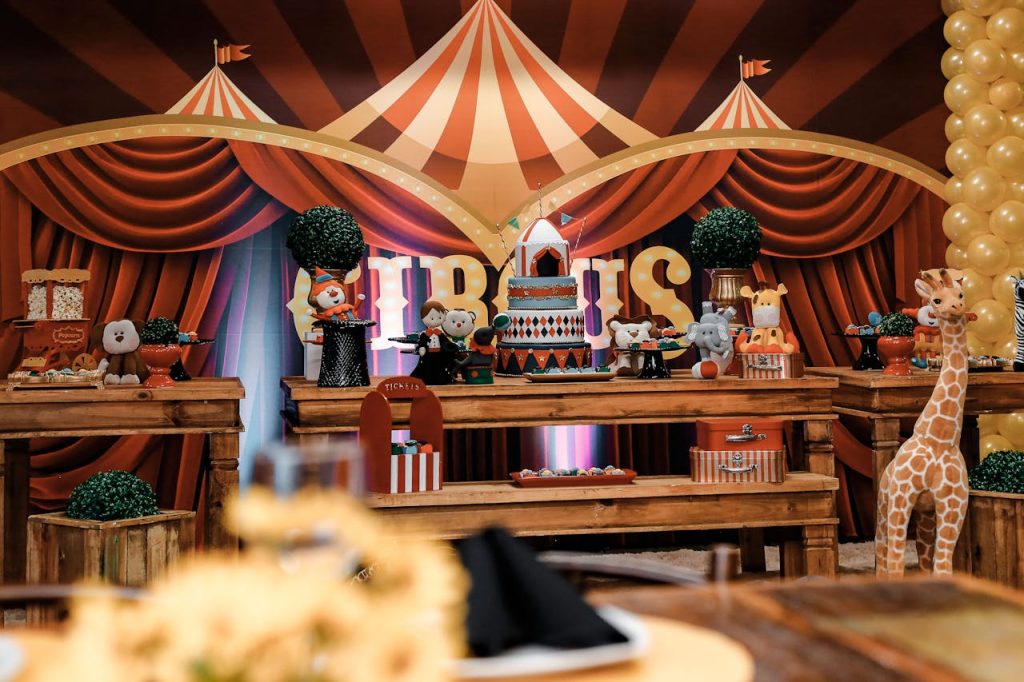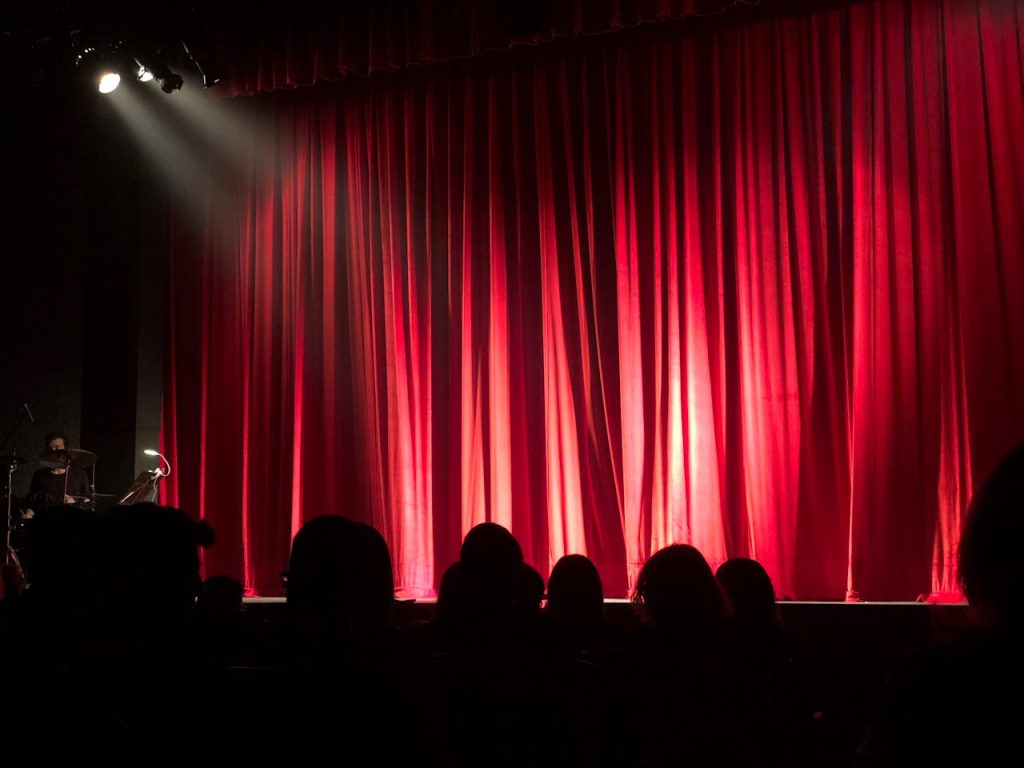Your cart is currently empty!
Circus-Theater Roncalli Redefines Entertainment Through Light Innovation and Ethical Artistry

For more than a century, the circus has been synonymous with spectacle. It was a world of daring acts, bright lights, and the roar of the crowd. But the soundscape inside the modern big top is changing. Where elephants once paraded and lions performed, the stage now glows with projected life. Audiences sit in silence as holographic creatures shimmer into motion, filling the space with wonder without a single living animal in sight.

Leading this transformation is Germany’s Circus-Theater Roncalli, a production that has replaced traditional animal acts with intricately designed holograms. The decision marks a turning point in live entertainment, one that merges ethics with artistry. In an industry built on illusion, Roncalli’s innovation reveals something real about progress. It shows that the spirit of performance can evolve without losing its magic.
The Spectacle Reimagined
When Italian photographer Davide Bertuccio attended a performance by Circus-Theater Roncalli in late 2022, he encountered a version of the circus that felt both familiar and entirely new. The arena was quiet, the kind of quiet that carries anticipation rather than noise. “Finding a circus without the din of animals, but the simple noise of people was a surprise,” he told CNN. That stillness framed the show that followed, where technology and artistry worked together to create an experience unlike any he had seen before.
As the performance began, the tent shifted into a world of light. Eleven laser projectors filled the space with intricate holograms that moved in harmony with the acrobats and dancers. The animals that appeared on stage were not physical beings but luminous projections that glided, galloped, and swam as though alive. Each sequence was carefully designed to blend movement, music, and emotion, forming a narrative that drew the audience deeper into the performance.
Rather than commanding attention through dominance or power, Roncalli’s show evoked emotion through balance and respect. The holographic animals became part of the story, their presence amplifying the grace of the human performers instead of replacing it. The effect was a form of visual poetry, one that highlighted collaboration between creativity and conscience.

Bertuccio later described the atmosphere as deeply moving. Without the sounds of stressed animals or the weight of ethical discomfort, the silence of the tent became part of the art itself. The audience was absorbed, not by fear or excitement, but by reflection and awe. In that quiet unity, Circus-Theater Roncalli demonstrated that innovation can preserve the soul of performance while freeing it from its past.
The Evolution of a Visionary Circus
Circus-Theater Roncalli’s journey toward innovation began long before holograms entered the tent. Founded in 1976 by Bernhard Paul, the company built its reputation on performances that favored artistry and emotion over spectacle. Paul envisioned a circus that could tell stories rather than rely on shock value. His approach combined the intimacy of theater with the timeless rhythm of circus performance, creating productions that were as reflective as they were entertaining.
By the 1990s, Paul made a decision that would define the future of his company. He removed live animals from the program, choosing artistic integrity over tradition at a time when few others in the industry dared to. The move was ahead of its time, preceding the global momentum for animal welfare that would come years later. This decision placed Roncalli on a distinct creative path, one shaped by empathy and imagination rather than imitation of the past.
That same vision guided the company into the next century. In 2019, Roncalli collaborated with a German augmented reality firm to reimagine its performances for the modern era. The partnership led to the introduction of holographic animals projected in full scale, with details so precise that they appeared almost tangible. This advancement allowed Roncalli to replace its live animal acts with intricate digital creations, transforming elephants, horses, and even schools of fish into luminous works of art.
The result was more than a technical success. It reshaped what audiences expected from live entertainment. Roncalli’s shows now merge storytelling, music, and technology in a seamless performance that highlights human creativity while honoring compassion. Each production reflects careful design, from the positioning of projectors to the choreography of light and sound, ensuring that innovation serves the narrative rather than overshadows it.

Through these choices, Circus-Theater Roncalli has become a model for ethical artistry. Its performances show that progress and empathy are not competing ideals but complementary forces. By proving that the circus can evolve without abandoning its spirit, Roncalli has inspired a broader conversation about the future of performance and the role of technology in shaping a more conscious form of entertainment.
The Rise of a Compassionate Stage
Circus-Theater Roncalli’s transformation proved that the magic of the circus never depended on live animals. Through holographic performances, the company created a new kind of spectacle that replaced control with creativity and compassion. The luminous projections of elephants, horses, and fish moved seamlessly alongside acrobats and dancers, blending technology and artistry into a unified experience. The applause that once followed animal tricks now celebrated imagination and innovation.

This approach resonated strongly with modern audiences who sought entertainment that reflected empathy as much as excitement. By shifting the emotional focus from dominance to connection, Roncalli redefined what it means to inspire awe. Its success showed that the heart of performance lies in collaboration between human artistry and humane values.
Other companies soon followed its lead. In France, L’Écocirque began presenting holographic animals set to live orchestral music, earning similar praise from audiences and animal welfare advocates. Together, these new productions signal a larger cultural shift, one where technology and ethics work in harmony to preserve wonder without harm.
Roncalli reminded the world that the circus was never truly about the animals. It was always about imagination brought to life. By reimagining that legacy through light, the company showed that progress in entertainment can honor both art and compassion.
A Blueprint for the Future of Live Entertainment
Circus-Theater Roncalli’s success has become more than a milestone in circus history. It is now a reference point for how live performance can adapt to changing cultural values. The decision to replace live animals with holograms has influenced theater companies, touring productions, and even theme parks that are exploring how technology can enhance spectacle while upholding ethical responsibility.

The appeal lies not only in the visual novelty but in the principle behind it. Roncalli proved that creativity can evolve without relying on outdated traditions. Its blend of artistry and compassion resonates with younger audiences who are more conscious of sustainability and ethics in the entertainment they support. This awareness is shaping industry standards, encouraging producers and directors to approach innovation through the lens of integrity rather than excess.
Within Europe, several performing arts festivals have cited Roncalli’s model as an example of sustainable production design. The use of projection-based storytelling has expanded beyond the circus, appearing in dance performances, music tours, and immersive theater experiences. Each adaptation builds on the same idea: that technology can deepen emotional impact without compromising human or animal welfare.
As digital and live arts continue to intersect, Circus-Theater Roncalli’s legacy demonstrates that ethical creativity is not a constraint but an advantage. By leading with empathy, it redefined how entertainment connects with its audience, setting a precedent that innovation should not only astonish but also align with the evolving conscience of its time.
Redefining the Meaning of Spectacle
Circus-Theater Roncalli’s reinvention is more than a story about technology or performance. It reflects a shift in how audiences define wonder and meaning in entertainment. The circus, once a symbol of power and extravagance, has become a platform for awareness and imagination. By choosing compassion over convention, Roncalli reintroduced a sense of integrity to the stage.

The company’s approach marks an important evolution for the performing arts industry, which continues to balance creativity with social responsibility. In an era where audiences are drawn to authenticity and purpose, Roncalli’s model demonstrates that emotional impact does not require exploitation. The power of its performances lies in how they connect people through shared values rather than spectacle alone.
As live entertainment continues to evolve, the question is no longer whether audiences can be moved without cruelty but how art can continue to inspire with conscience. Circus-Theater Roncalli’s work suggests that progress in performance is not measured by scale or grandeur but by the intention behind it. The glow of its holographic stage is a reminder that true artistry endures when imagination and empathy stand side by side.
